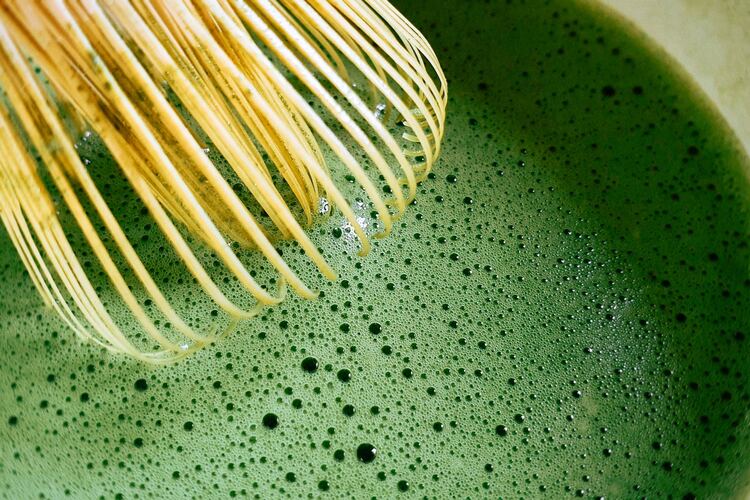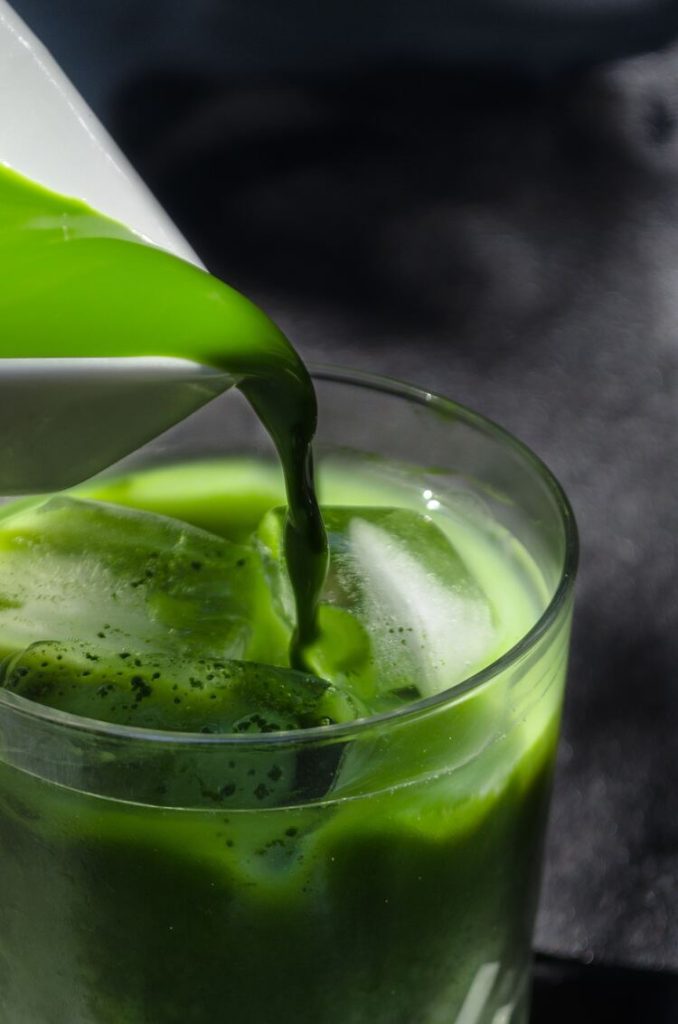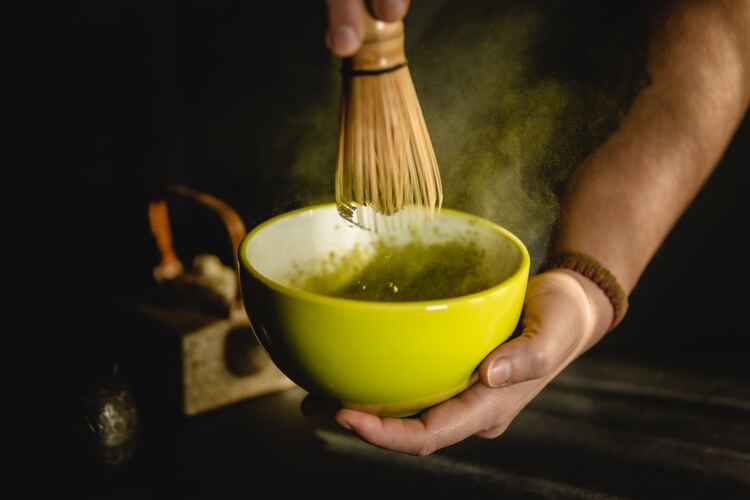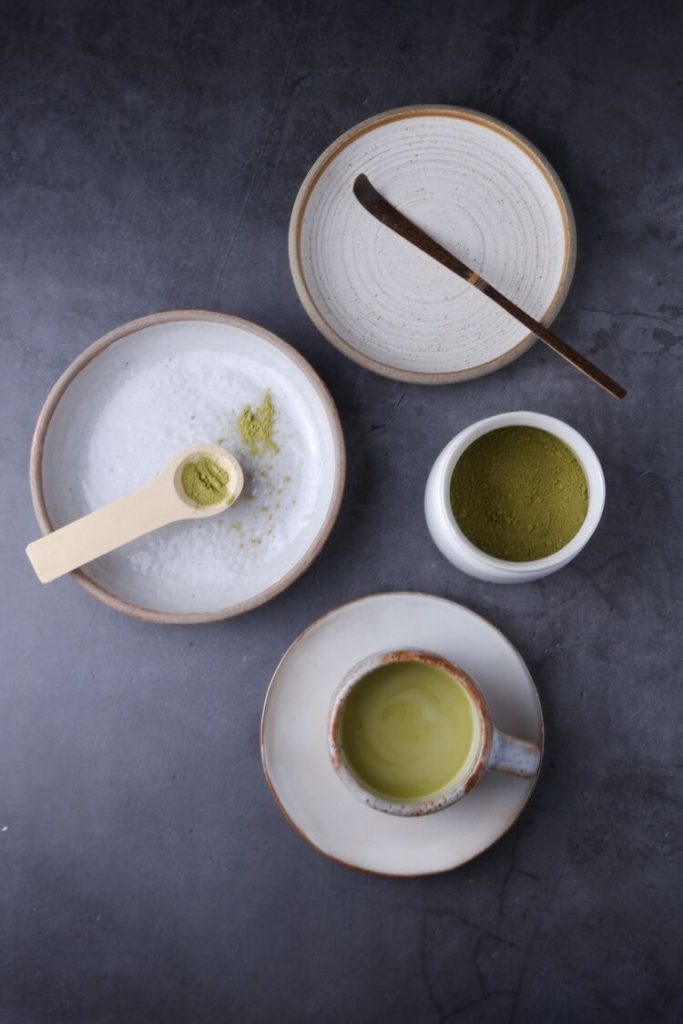What does matcha taste like?
Matcha is a vibrant green tea powder that has gained popularity recently for its unique flavor, rich color, and numerous health benefits. As tea enthusiasts, we were curious about what matcha actually tastes like and set out to explore its flavor profile.
Upon trying matcha for the first time, we can confirm that its taste is quite distinct. The initial flavor we experienced was a pleasant sweetness, followed by a subtle earthiness and a hint of umami. The smooth, creamy texture of the whisked tea could be described as velvety, leaving a lingering, fresh aftertaste in our mouths.
However, it’s important to keep in mind that the taste of matcha can vary depending on the quality of the powder, how it’s prepared, and whether any other ingredients are added. By exploring different matcha preparations and recipes, you can find a matcha experience tailored to your taste buds.
We have a lot to share about this green wonder! Keep reading to learn more!
Please note: This article contains affiliate links, meaning I may earn a commission if you make a purchase by clicking a link. Of course, this comes at no extra cost to you and helps me to keep offering solid information to readers.

Understanding Matcha
Before diving into the taste of matcha, let’s get a better understanding of what matcha is, its history and origin, and how it’s produced.
History and Origin
Matcha has a deep-rooted history in Japanese culture. It originated in China during the Tang Dynasty (618-907), where the tea leaves were steamed, molded into bricks, and ground into powder. The powdered tea eventually reached Japan in the late 12th century and became an integral part of Zen Buddhist culture.
In Japan, matcha holds a special place in the traditional Japanese tea ceremony (Chanoyu), which is a ritualistic preparation, serving, and appreciation of matcha. The tea ceremony symbolizes harmony, tranquility, and respect, which reflects the values of Zen Buddhism.
Production Process
Matcha is made from high-quality tea leaves, specifically from the Camellia sinensis plant. The production process of matcha is quite intricate, and several steps are taken to ensure the best flavor and quality.
Here’s a brief overview of the production process:
- Shading: About three weeks before harvesting, the tea plants are shaded to reduce direct sunlight. This encourages the leaves to produce more chlorophyll, boosting their green color and flavor.
- Harvesting: Only the young, tender leaves at the top of the plant are hand-picked for matcha production.
- Steaming and Drying: After harvesting, the leaves are steamed to preserve their vibrant color and prevent oxidation. They are then air-dried and deveined to obtain the pure leaf material called “Tencha.”
- Grinding: The Tencha is ground into a fine powder using traditional stone mills. The slow grinding process prevents heat from affecting the quality of the matcha powder.
Now that we have a better understanding of matcha’s history, origin, and production process, we can explore its unique taste in the next sections of the article.
What Does Matcha Taste Like?
Here’s a detailed breakdown of matcha’s flavor profile:
Umami: Matcha is often described as having a rich umami flavor, which is a pleasant and savory taste (sometimes compared to eating steak or other meat products). This umami taste results from the shading process that the tea leaves undergo before harvesting. The reduced exposure to sunlight increases the amino acid content, particularly L-theanine, which contributes to the umami sensation.
Grassy and Vegetal: Matcha retains the natural vegetal taste of green tea but with a slightly more pronounced intensity. The flavor can be reminiscent of freshly cut grass or steamed spinach. This grassy and vegetal character is due to the chlorophyll content of the tea leaves.
Bitterness: Matcha can exhibit a mild to moderate bitterness, especially when prepared with higher concentrations of powdered tea or at higher temperatures. This bitterness can be balanced by the other flavors present and is often considered a desirable aspect of the overall taste.
Sweetness: Despite the bitterness, high-quality matcha is known for its inherent sweetness. This sweetness is closely tied to the amino acids present, particularly L-theanine, which has a naturally sweet taste. The balance between bitterness and sweetness contributes to matcha’s complex flavor profile.
Creaminess: When matcha is prepared traditionally using a bamboo whisk, it can develop a smooth and creamy texture, further enhancing the overall experience. This creamy aspect adds to the mouthfeel and complements the other flavors.
Astringency: Some matcha preparations may exhibit a touch of astringency, which is a drying sensation in the mouth. This can be attributed to the tea’s catechin content, which is a type of natural plant compound found in tea leaves.
Subtle Floral Notes: Depending on the specific type of matcha and its origin, there might be subtle floral undertones in the flavor profile. These floral notes can contribute to the complexity of the taste experience.
Nutty or Toasty Undertones: In some cases, matcha can have hints of nuttiness or toasty flavors, especially in lower-grade matcha or when the tea leaves are roasted during processing.

Factors Influencing Taste
Some factors influence the taste of matcha. These include the cultivation and processing methods, as well as the type and quality of matcha you choose.
- Cultivation Method – Shading the tea plants for a few weeks before harvest enhances the umami flavor and increases chlorophyll content, which creates matcha’s vibrant green color.
- Processing Method – After harvesting, the leaves are steamed, dried, and ground into a fine powder. This preserves the nutrients and creates the unique taste profile of matcha.
- Types of Matcha – Ceremonial grade matcha is the highest quality, with the most umami flavor and little to no bitterness. Culinary grades have a more robust taste, perfect for cooking and baking.
As you explore the world of matcha, you will find a variety of flavors and qualities to suit your preferences.
Popular Matcha Beverages
Here are some of the most popular matcha beverages and their distinct taste profiles.
Traditional Matcha Tea
Traditional matcha tea is made by whisking matcha powder with hot water. The result is a vibrant green, frothy beverage with a unique taste. Some may describe it as slightly bitter, while others might find it slightly sweet with a hint of umami. The texture is smooth and creamy, yet the mouthfeel can be somewhat grainy due to the fine powder.
Matcha tea ceremonies often involve the use of high-quality ceremonial grade matcha, which has a more refined taste and smoother texture compared to the culinary grade used for cooking and baking.
Matcha Lattes
Matcha lattes are a creamy, delicious alternative to traditional matcha tea. They are made by blending matcha powder with milk or a plant-based milk alternative. The milk reduces the bitterness of the matcha and adds a luxurious, velvety texture to the drink. Sweeteners like honey, agave, or sugar can be added to enhance the sweetness, balancing the flavors nicely.
Some matcha latte variations include:
- Iced matcha lattes
- Blended matcha frappes
- Dirty matcha lattes (with a shot of espresso)
Read More: What Does Matcha Latte Taste Like?
Matcha Desserts
Besides traditional tea and lattes, matcha powder is used in various tasty desserts. The unique flavor of matcha adds a delightful twist to classic recipes. Some popular matcha-infused desserts include:
- Matcha ice cream – A frozen treat that combines the earthy flavor of matcha with a smooth, creamy texture.
- Matcha mille crepe cake – A delicate cake made of stacked, paper-thin crepes layered with matcha-infused cream.
- Matcha macarons –
These elegant French cookies feature matcha-flavored shells and a sweet matcha buttercream filling.
These are just a few examples of how matcha can be incorporated into beverages and desserts. The possibilities are endless (literally, I have even seen matcha bagels), and the taste is always a delightful surprise.

How to Enjoy Matcha at Home
Trying matcha at home can be a delightful and rewarding experience. This Japanese tradition brings out the authentic taste and ceremony of preparing tea. Here, we will walk you through some tips and suggestions on how to enjoy matcha at home.
Choosing the Right Matcha
There are various grades and types of matcha available on the market. To ensure the best flavor, it’s essential to choose a high-quality matcha powder. Here are a few things to consider when selecting the right matcha:
- Color: Look for a vibrant green color, indicating a higher quality, fresher matcha powder.
- Texture: The texture should be finely ground and smooth, not coarse or gritty.
- Origin: Japanese matcha is considered to be of higher quality due to its cultivation and processing methods. Look for matcha from regions like Uji, Kyoto, or Nishio.
You might start with a ceremonial grade matcha, which is known for its premium quality and used in traditional Japanese tea ceremonies. It has a delicate flavor, which makes it suitable for enjoying straight.
Preparing Matcha
Once you have chosen your matcha powder, you can begin preparing your tea. Follow these steps for the best results:
- Measure: Use a bamboo tea scoop, or chashaku, to measure out 1-2 scoops of matcha powder, depending on your preference.
- Sift: Sift the powder through a fine mesh sieve into a bowl, to remove any clumps.
- Add water: Pour 2-4 ounces (60-120 mL) of hot, but not boiling water (around 175°F or 80°C) into the bowl.
- Whisk: Use a bamboo whisk (chasen) to whisk the matcha and water together in a zigzag motion until a frothy layer forms. This should take about 15-30 seconds.
You can now enjoy your matcha as is or sweeten it with a little honey or sugar. Other popular ways to enjoy matcha at home include making a matcha latte, adding matcha to smoothies, or using it as an ingredient in desserts or baked goods.

Matcha Food Pairings
Regarding food pairings with matcha, there are countless delicious options to explore. In our experience, matcha’s unique flavor complements various foods, from the sweet to the savory.
We particularly enjoy pairing matcha with sweet treats, such as:
- Chocolate – especially white chocolate
- Ice cream and frozen yogurt
- Pancakes and waffles
- Mochi and other traditional Japanese desserts
On the savory side, the umami notes in matcha can bring out the best in dishes like:
- Rice dishes like sushi or onigiri
- Avocado toast is an unexpected yet tasty pairing
- Grilled vegetables with a matcha-infused sauce
When it comes to beverages, we believe matcha pairs perfectly with:
- Coconut water
- Yuzu juice
- Tea-based mocktails
- Sake
- Gin & Tonic
- Whiskey Highball
Matcha Buying Recommendations
And, of course, we cannot end this article without sharing our top matcha recommendations.
Numi Organic Tea Ceremonial Matcha

Jade Leaf Organic Matcha Green Tea Powder

Matcha DNA Green Tea Powder Culinary Grade

Matcha Preparation Sets
If you do not have the proper equipment to prepare matcha in the traditional way, here are some recommendations concerning preparation sets (the first recommendation is very affordable):
Jade Leaf Traditional Matcha Starter Set


Artcome Japanese Matcha Tea Set

All this writing about matcha made me feel like having a matcha latte! Well, my friend, I hope you have enjoyed the article. Until next time, keep brewing and sipping!
To you, what does matcha taste like?
More About Matcha
What Does Blue Matcha Taste Like?
More About Green Tea
What Does Green Tea Taste Like?